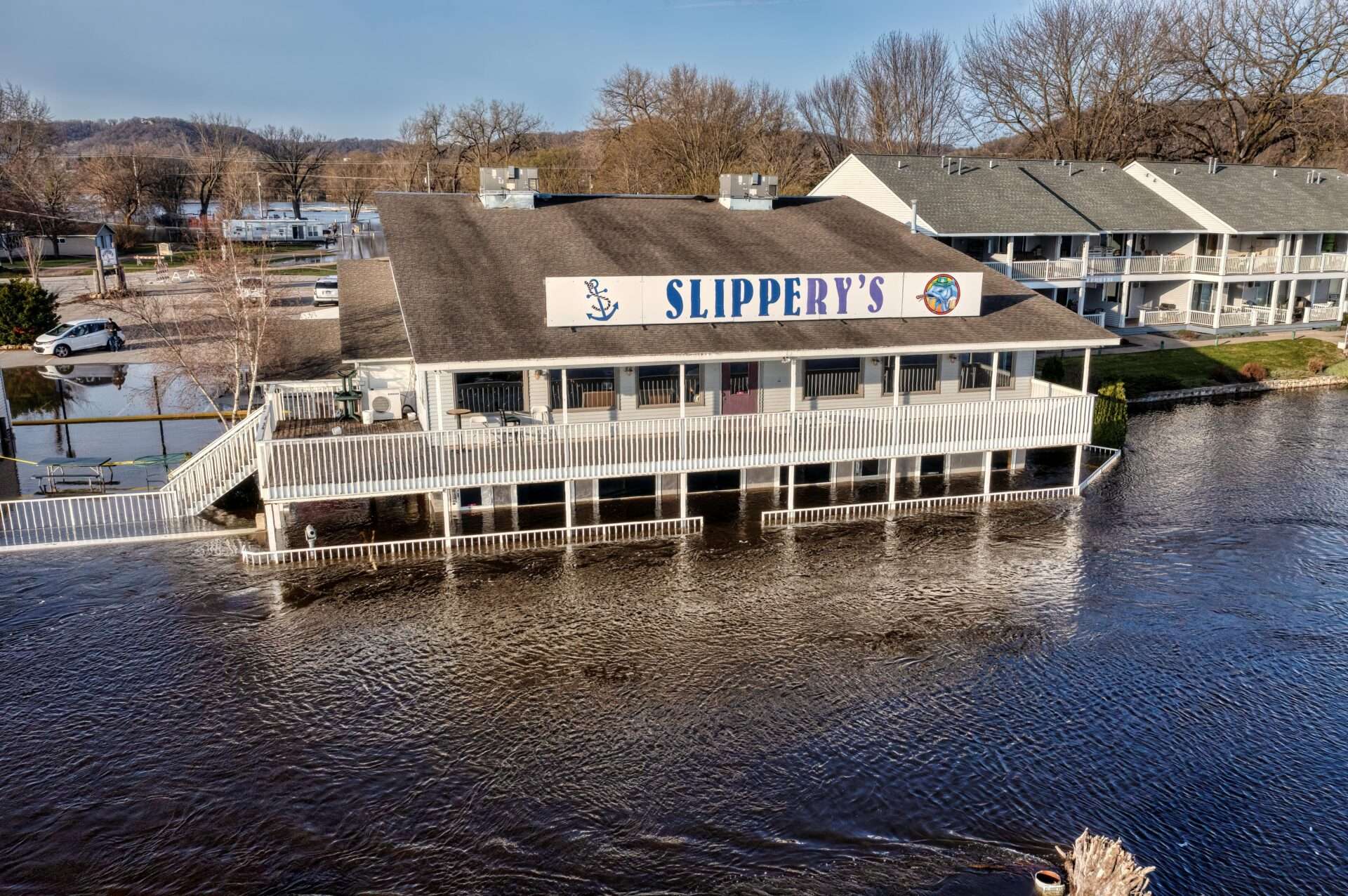
The Role Of Industrial Water Damage Equipment In Large-Scale Flooding
The Role Of Industrial Water Damage Equipment In Large-Scale Flooding
By: Brothers Equipment & Supply
Large-scale flooding events have become increasingly frequent in Canada, driven by changing climate patterns and extreme weather conditions.
Industrial water damage equipment plays a critical role in minimizing the impacts of these flooding events, especially in preserving infrastructure, protecting public health, and reducing economic losses.
This article explores the types of industrial water damage equipment commonly used in large-scale flooding, how they are deployed, and why rapid response is essential in these challenging situations.
Let’s get right into this!
Understanding The Impact Of Large-Scale Flooding
Causes And Frequency Of Large-Scale Flooding In Canada
Canada experiences a range of natural flooding causes, including storm surges, rapid snowmelt, and heavy rainfall. These factors are exacerbated by climate change, which has led to an increase in the frequency and intensity of flooding.
According to the Insurance Bureau of Canada, the economic cost of flooding in 2020 alone exceeded $2 billion, with much of the damage affecting residential and commercial properties. The rise in urbanization has further intensified flooding risks, as impermeable surfaces like concrete prevent natural water absorption, directing more water towards drainage systems.
Damage To Infrastructure And Communities
Flooding damages infrastructure, homes, businesses, and critical services, disrupting lives and local economies. Roads, bridges, and buildings may sustain long-term damage if water is not quickly removed, leading to repair costs that can stretch into the millions.
Flooding events also pose risks to power supply, drinking water, and public health. Quick response with industrial equipment can prevent the escalation of damage and facilitate faster recovery for affected communities.
Key Types Of Industrial Water Damage Equipment
High-Powered Pumps
High-powered pumps, such as submersible and centrifugal pumps, are essential for rapid water extraction in large-scale flooding. Submersible pumps are often used in deep, submerged areas like basements, while centrifugal pumps are ideal for transferring large volumes of water quickly.
These pumps can remove thousands of litres of water per hour, making them a fundamental piece of equipment in flood response. The Canadian government recommends these pumps for regions prone to severe flooding, as they can significantly reduce water levels within a short time.
Commercial-Grade Dehumidifiers
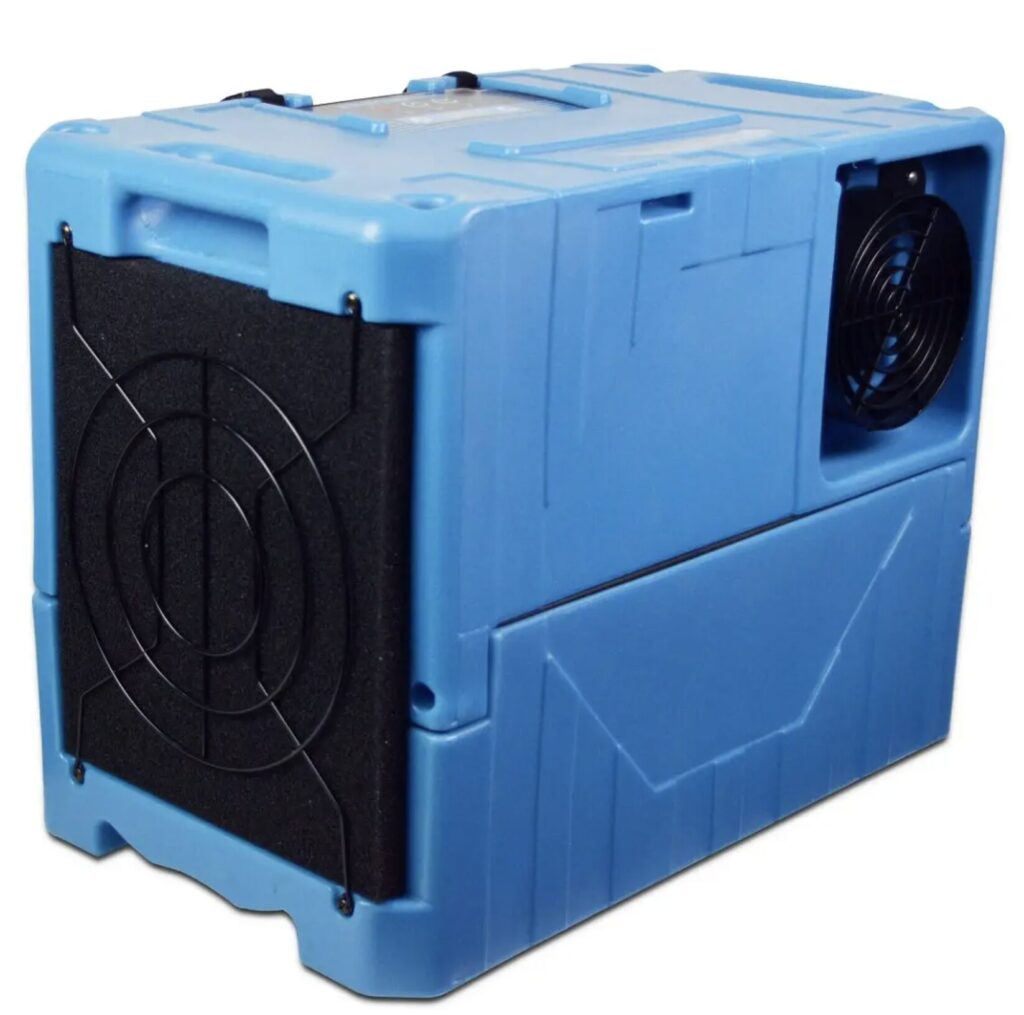
Once the water is removed, controlling humidity is crucial to prevent mould growth and structural damage. Industrial dehumidifiers are designed to handle large areas and can extract much more moisture than residential units.
These dehumidifiers help bring down humidity levels quickly, ensuring that mould does not have a chance to develop. According to Health Canada, mould can start growing within 24 to 48 hours in damp conditions, so using powerful dehumidifiers is essential to prevent further health hazards.
Air Movers And Axial Fans
Air movers and axial fans play a vital role in speeding up the drying process by circulating air across wet surfaces. By promoting faster evaporation, these devices reduce the time required for water removal.
In large spaces, multiple air movers are often used to create a consistent airflow, helping dry walls, floors, and structural materials efficiently. Axial fans are also particularly useful in ventilating closed spaces, minimizing airborne contaminants that could impact indoor air quality.
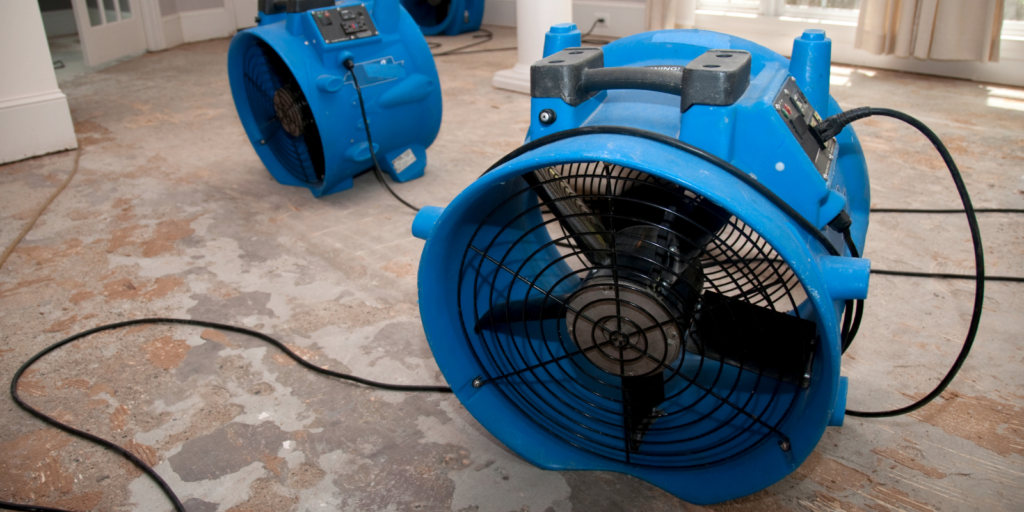
Moisture Meters And Thermal Imaging Cameras
Industrial moisture meters and thermal imaging cameras are essential tools for detecting hidden water damage. These devices can identify moisture trapped within walls, floors, and structural components that may not be visible.
Thermal imaging cameras, in particular, can reveal temperature differences that indicate moisture presence. This technology enables restoration professionals to locate hidden moisture and address it before it causes further structural issues or mould growth.
HEPA Filtration Systems
After flooding, the risk of air contamination increases due to the presence of mould spores, bacteria, and other pollutants. HEPA filtration systems remove airborne particles, improving air quality and making the environment safer for residents and restoration professionals.
High-Efficiency Particulate Air (HEPA) filters can capture particles as small as 0.3 microns, making them highly effective in post-flooding situations where indoor air quality is compromised.
The Importance Of Rapid Response In Flooding Situations
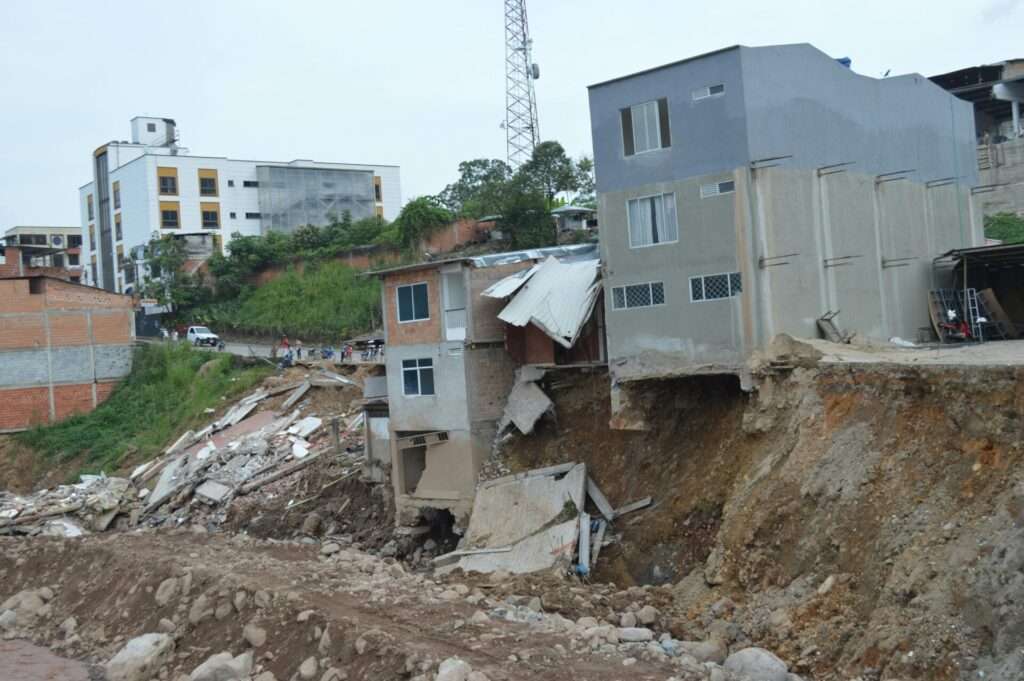
Preventing Secondary Damage
One of the primary reasons for rapid response in flood situations is to prevent secondary damage. Secondary damage includes mould growth, corrosion, and structural weakening, which can make buildings unsafe.
Industrial water damage equipment allows for efficient water extraction, drying, and dehumidifying, all of which are necessary to protect the structural integrity of affected buildings.
Protecting Public Health
Floodwater is often contaminated with bacteria, pathogens, and hazardous chemicals, posing immediate health risks. Industrial water damage equipment, especially pumps and dehumidifiers, reduces standing water and humidity, thus lowering the risk of bacteria and mould growth.
HEPA filtration systems further protect air quality, making flood-affected areas safer for residents and workers during cleanup.
Minimizing Economic Losses
Quick and effective flood response minimizes economic losses by reducing the extent of damage and shortening recovery times. According to the Canadian Federation of Independent Business, businesses impacted by flooding can face significant economic strain, with some never fully recovering.
Industrial water damage equipment expedites the drying and cleanup process, helping businesses and communities resume operations faster and reducing long-term financial impacts.
How Industrial Equipment Is Deployed In Large-Scale Flooding
Coordinated Efforts Between Agencies And Contractors
During large-scale flooding, government agencies, emergency response teams, and private restoration companies work together to deploy equipment efficiently.
This collaboration ensures that equipment is allocated based on priority areas, such as hospitals, schools, and essential services. Restoration contractors bring in specialized equipment, while public agencies may handle logistical coordination and public safety measures.
Pre-Flood Preparedness And Equipment Readiness
Having industrial equipment ready for deployment is critical for effective flood response. This includes conducting regular maintenance, ensuring equipment functionality, and training personnel on equipment use.
Some municipalities perform readiness drills to test their flood response plans, which include having industrial pumps, dehumidifiers, and generators on standby in case of emergency.
Post-Flood Cleanup Strategies
The cleanup process involves multiple stages, beginning with water extraction and progressing to drying, disinfection, and debris removal.
Specialized teams often use industrial equipment to remove water, dry structures, and sanitize affected areas, ensuring that no moisture remains to foster mould growth. Proper disposal of contaminated materials is also a key component of flood cleanup, as it reduces health risks associated with exposure to pathogens.
Challenges In Using Industrial Water Damage Equipment In Large-Scale Flooding
Accessing Flooded Areas Safely
Safety is a major concern when accessing flood zones, as damaged infrastructure and unstable ground can make it difficult to operate equipment.
Restoration crews often face obstacles such as submerged debris and limited accessibility, which require careful navigation and additional safety protocols.
Power Supply And Energy Needs
Large-scale flooding can disrupt power supplies, making it challenging to operate industrial water damage equipment.
Many restoration teams use generators to power pumps, dehumidifiers, and other equipment in flood-affected areas. Ensuring a reliable power source is critical to maintaining effective flood response and equipment operation.
Managing Contaminated Water And Debris
Floodwater is often contaminated with chemicals, sewage, and hazardous materials. Managing this contaminated water requires specialized handling and disposal processes.
Equipment such as filtration systems and protective barriers are used to separate and safely dispose of contaminated debris, protecting both workers and the environment.
Innovations In Industrial Water Damage Equipment
Advanced Sensors And IoT Integration
Technological advancements, such as IoT and smart sensors, are improving flood response. Sensors monitor equipment performance and environmental conditions, providing real-time data to optimize response strategies.
These tools also alert teams to equipment malfunctions, enabling prompt maintenance and reducing downtime.
Sustainable And Eco-Friendly Equipment
Manufacturers are increasingly developing sustainable water damage equipment to reduce environmental impact during flood recovery.
For instance, some industrial dehumidifiers now use eco-friendly refrigerants, while newer pumps are designed for energy efficiency. This shift toward sustainability aligns with Canada’s commitment to reducing its environmental footprint.
Improved Mobility And Compact Design
Newer models of industrial water damage equipment are more compact and mobile, allowing for faster deployment and ease of transport to flooded areas.
These design improvements enable response teams to navigate tight spaces and access multiple areas within a short timeframe, enhancing the efficiency of flood cleanup.
FAQ
How Do Industrial Dehumidifiers Differ From Residential Ones?
Industrial dehumidifiers are designed to extract much larger volumes of moisture and operate continuously for extended periods, making them more suitable for flood recovery.
What Equipment Is Most Effective For Flood Cleanup?
High-powered pumps for water removal and commercial-grade dehumidifiers for moisture control are typically the most effective equipment in flood cleanup efforts.
How Quickly Can Industrial Equipment Dry Out A Large Area?
Drying times vary based on area size and humidity levels, but with proper equipment, large spaces can often be dried in a few days, reducing the risk of mould.
How Can Industrial Equipment Improve Air Quality After A Flood?
HEPA filtration systems remove mould spores, bacteria, and other pollutants, improving air quality in flood-affected areas and making them safer for residents and workers.
Are There Grants For Flood Recovery Equipment In Canada?
Some provincial and federal programs offer funding or rebates for flood prevention and recovery equipment. Check with local authorities for eligibility.
What Role Does Technology Play In Modern Water Damage Equipment?
IoT and smart sensors enhance flood response by providing real-time monitoring and data, allowing for better resource management and faster recovery times.
How Can I Prepare For Large-Scale Flooding In My Area?
Steps include installing sump pumps, using flood barriers, and having a flood response plan that includes industrial water damage equipment if applicable.
How Safe Is It To Operate Industrial Equipment In Flooded Zones?
Operating equipment in flooded zones requires safety protocols, as there are risks like unstable ground and contaminated water. Proper training and safety gear are essential.
How Does Industrial Water Damage Equipment Prevent Mould Growth?
Dehumidifiers and air movers reduce humidity levels, creating an environment where mould cannot thrive, thus preventing health risks and structural damage.
What Should Be Done First When A Flood Occurs?
The initial steps include ensuring personal safety, removing standing water, and beginning the drying process as soon as possible to prevent further damage.
Conclusion
Industrial water damage equipment plays a crucial role in mitigating the impacts of large-scale flooding, from preventing structural damage to preserving public health.
Rapid response with specialised equipment can save communities from extensive losses and expedite recovery.
As flooding events become more frequent, innovations in water damage equipment and collaborative efforts will remain essential to protecting both property and lives. Investing in preparedness today means a safer, faster recovery tomorrow.
If you have any questions about our article “The Role Of Industrial Water Damage Equipment In Large-Scale Flooding” or need air scrubbers, contact us at sales@brothers-equipment.com or connect with us on social media.
